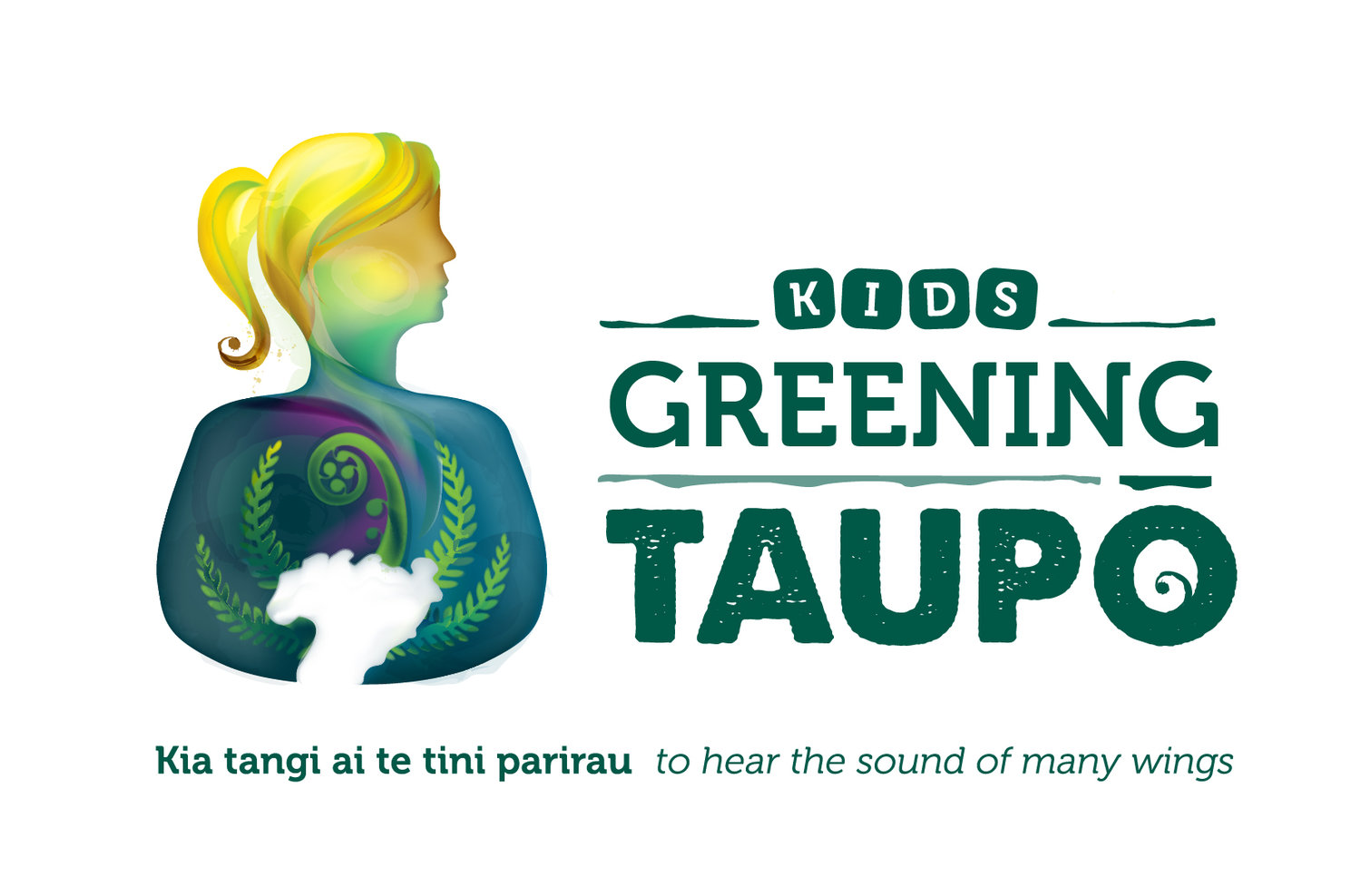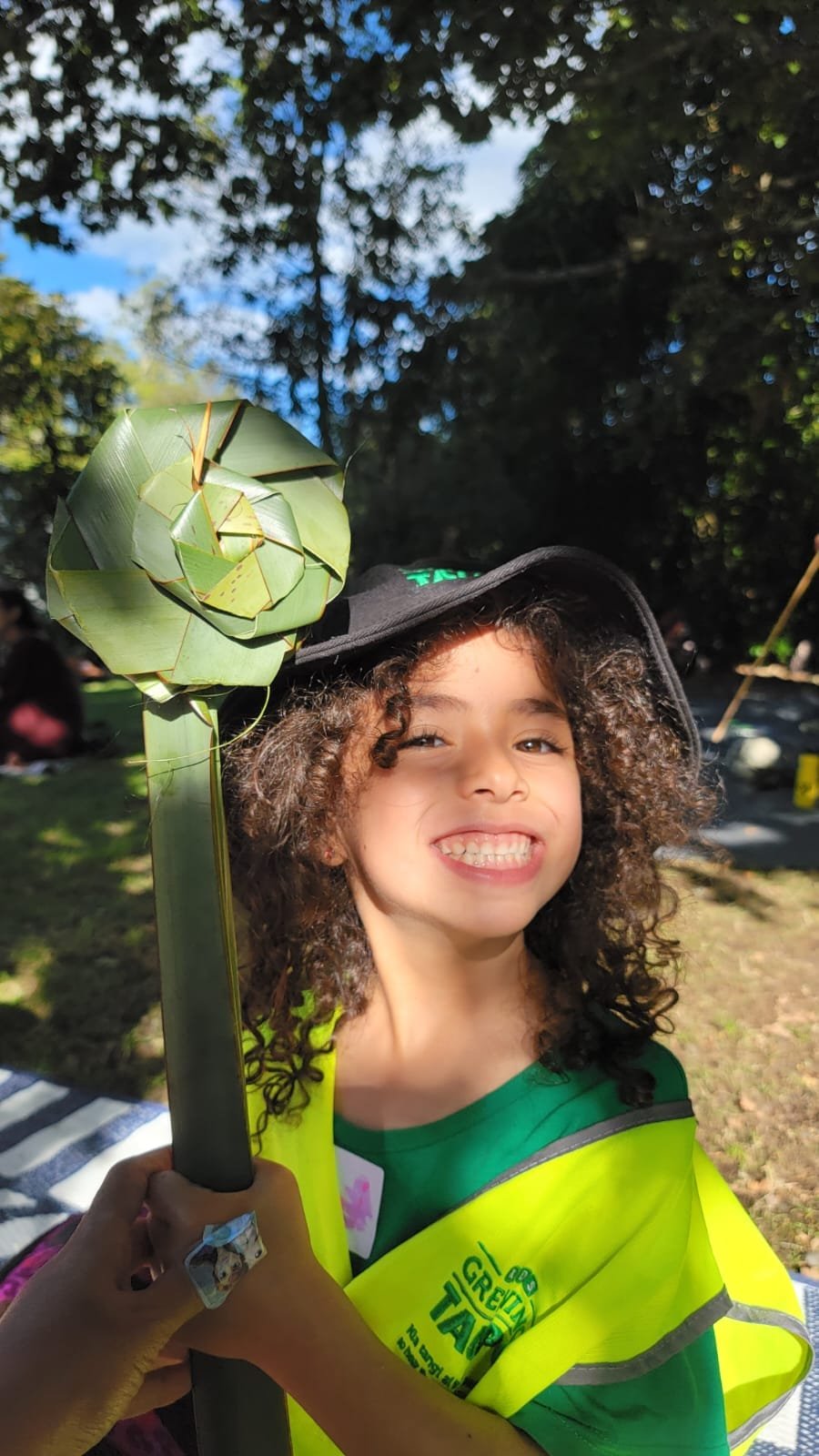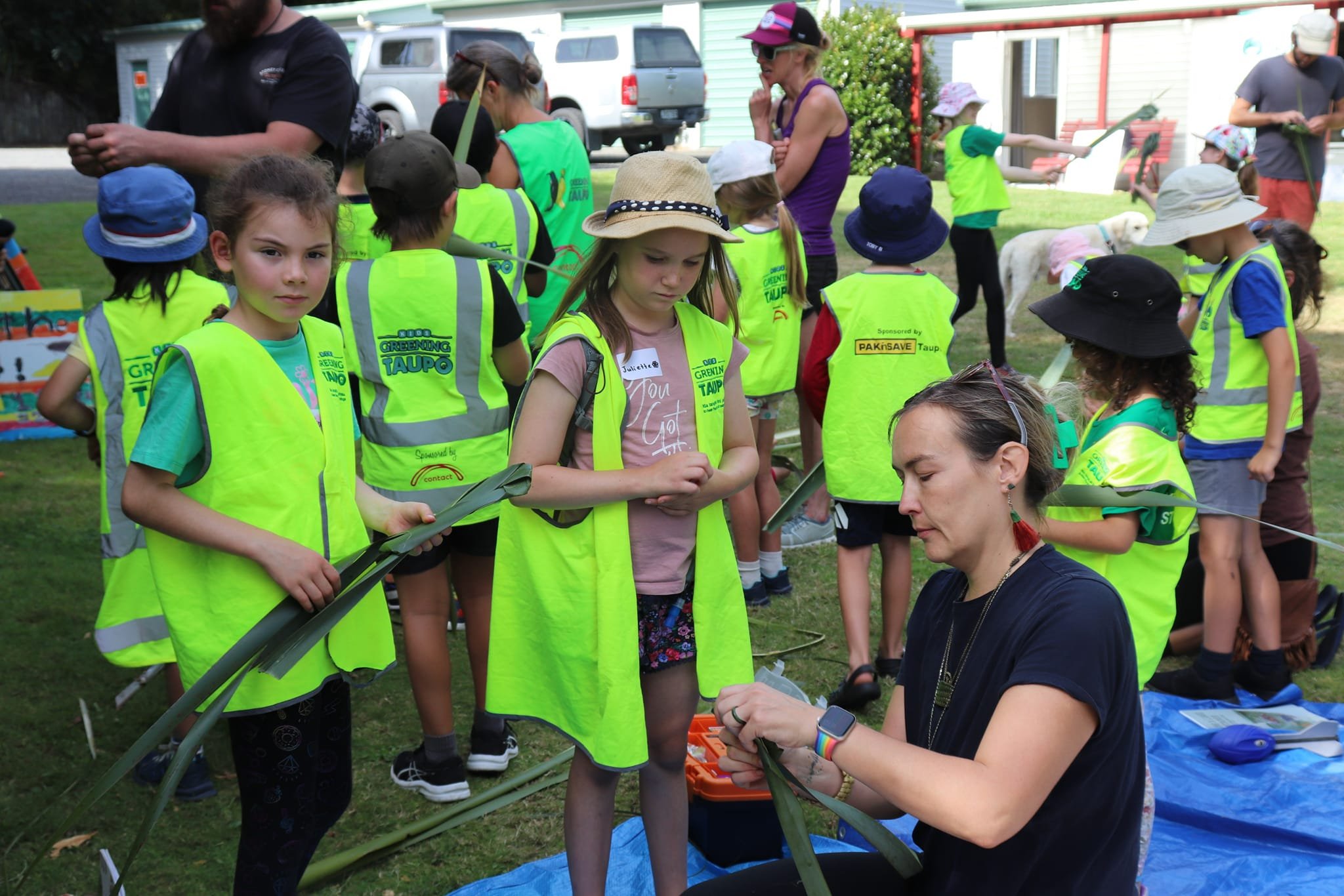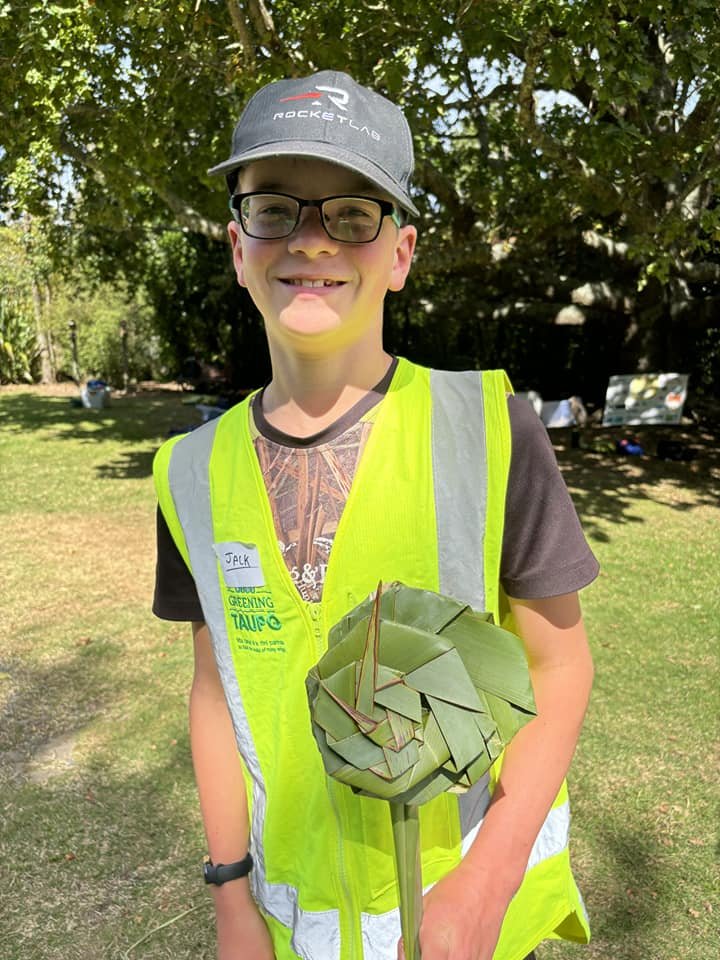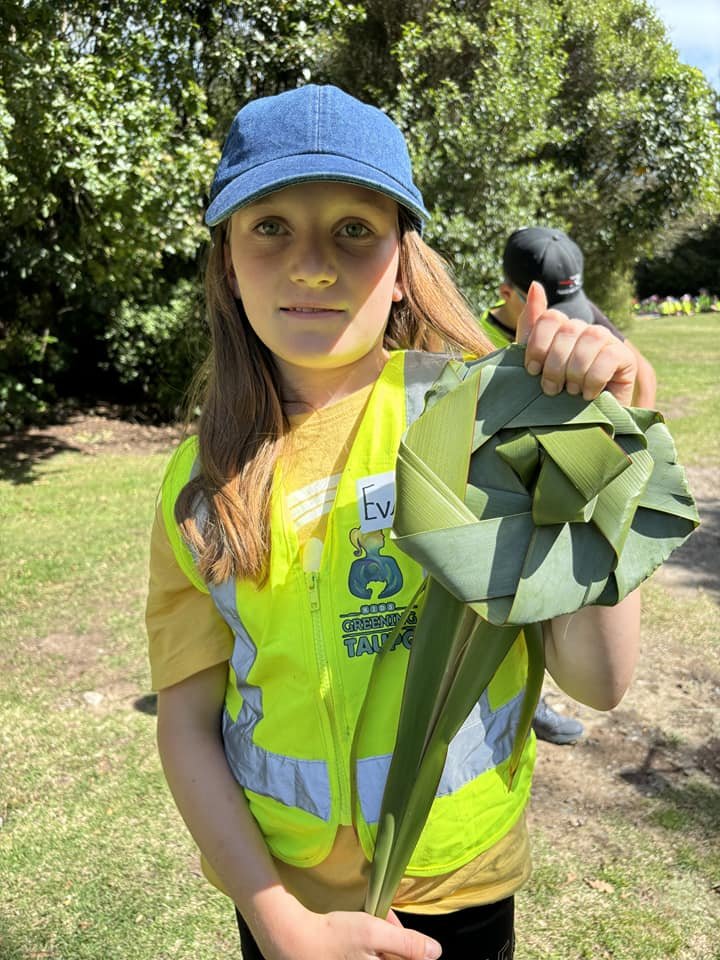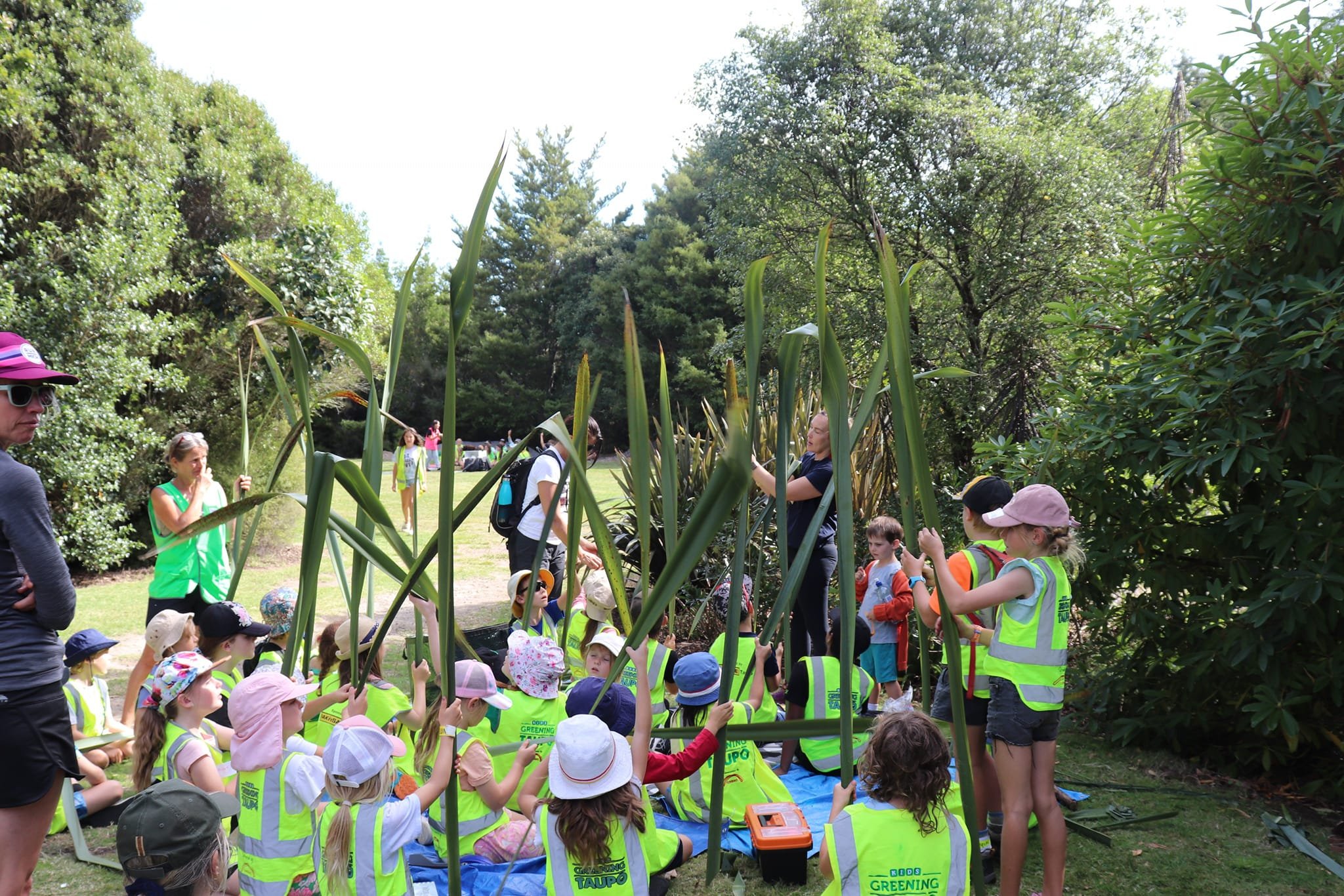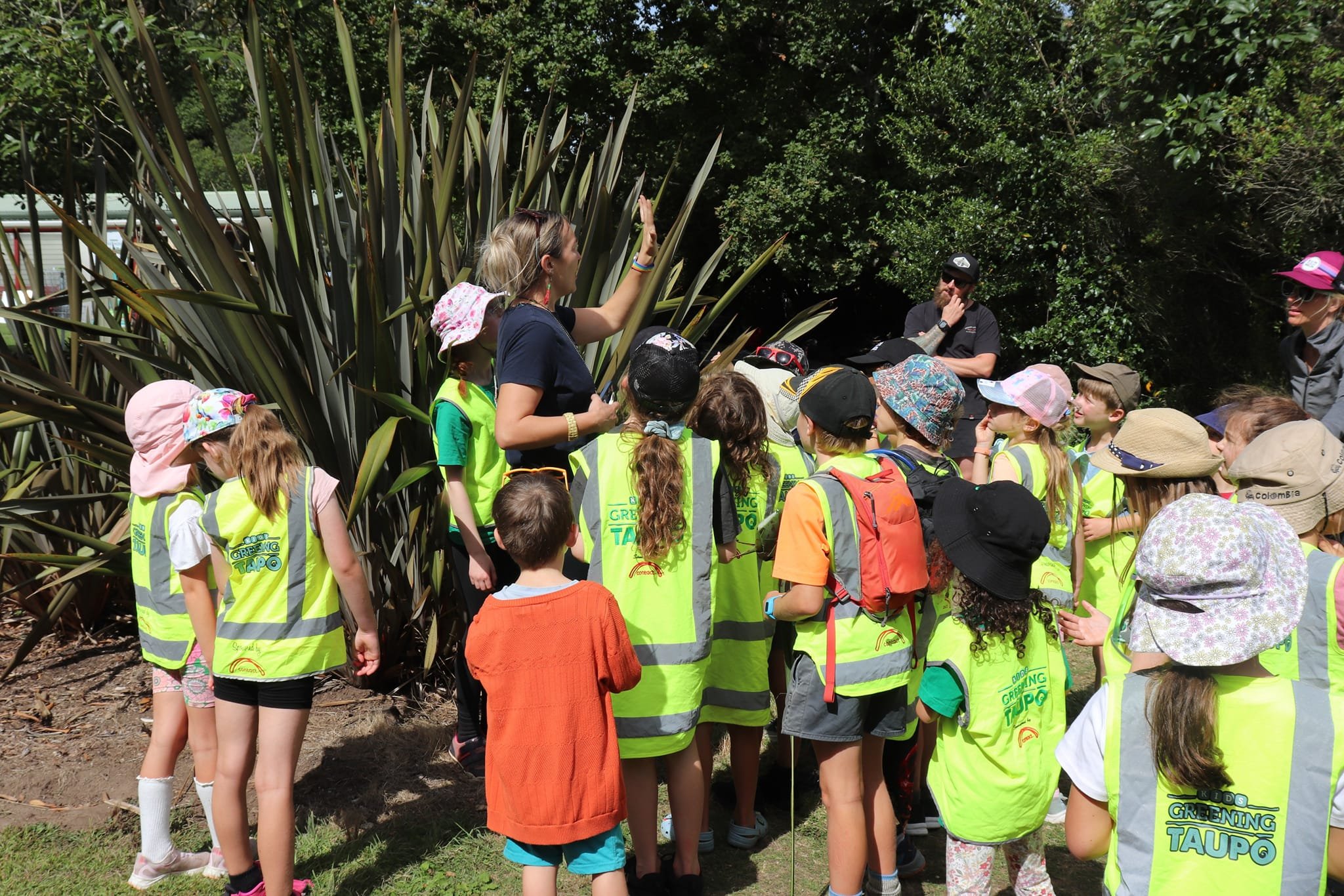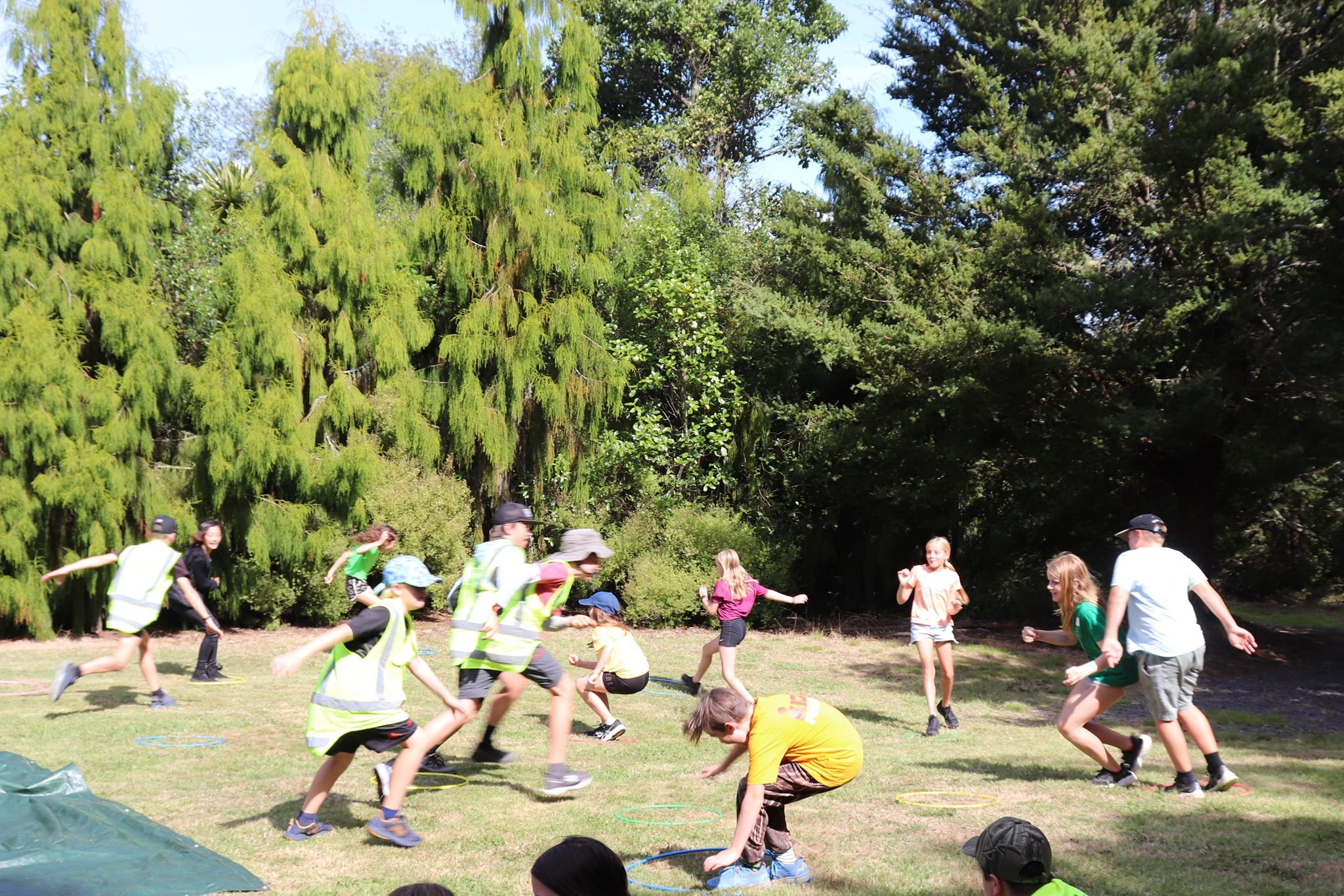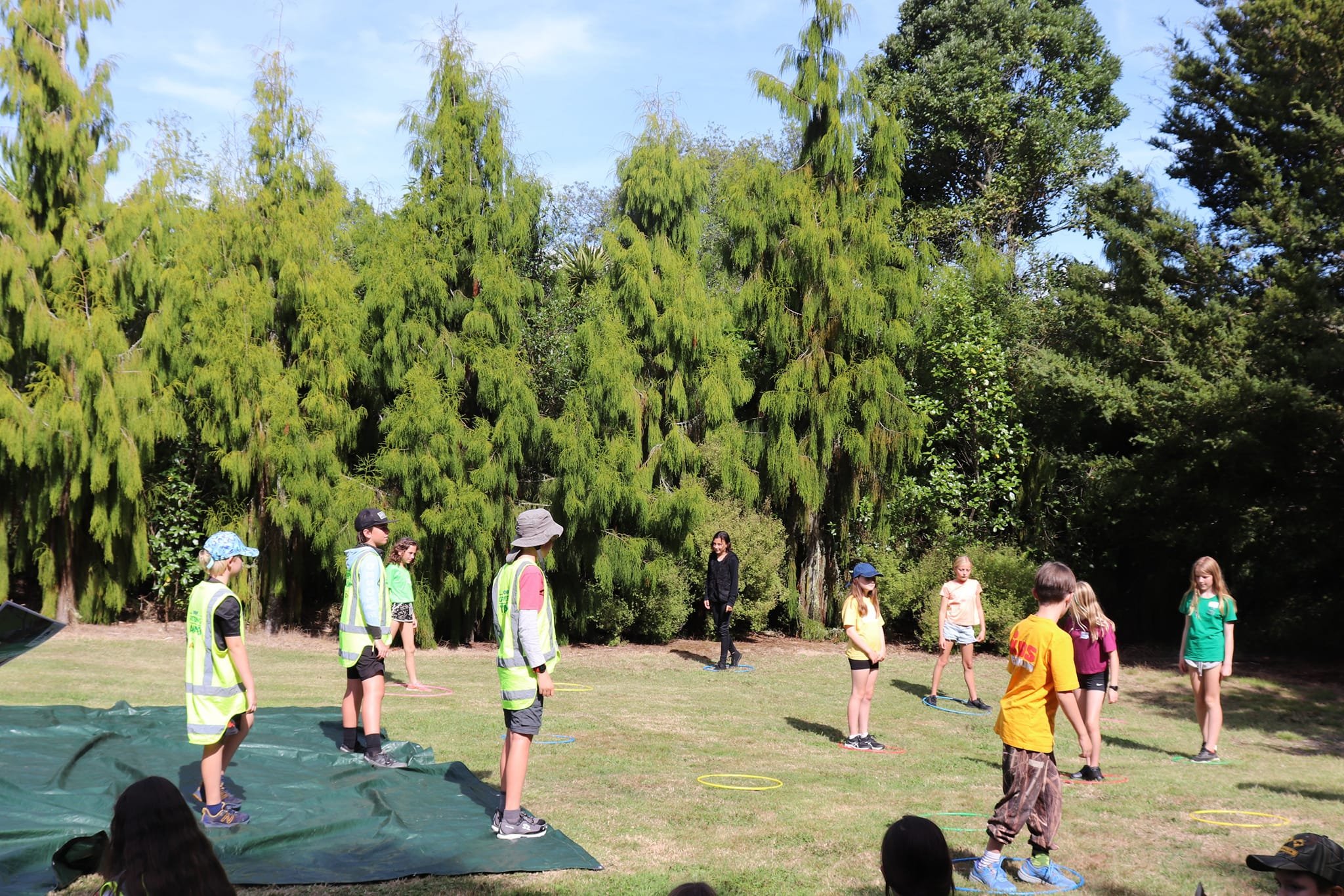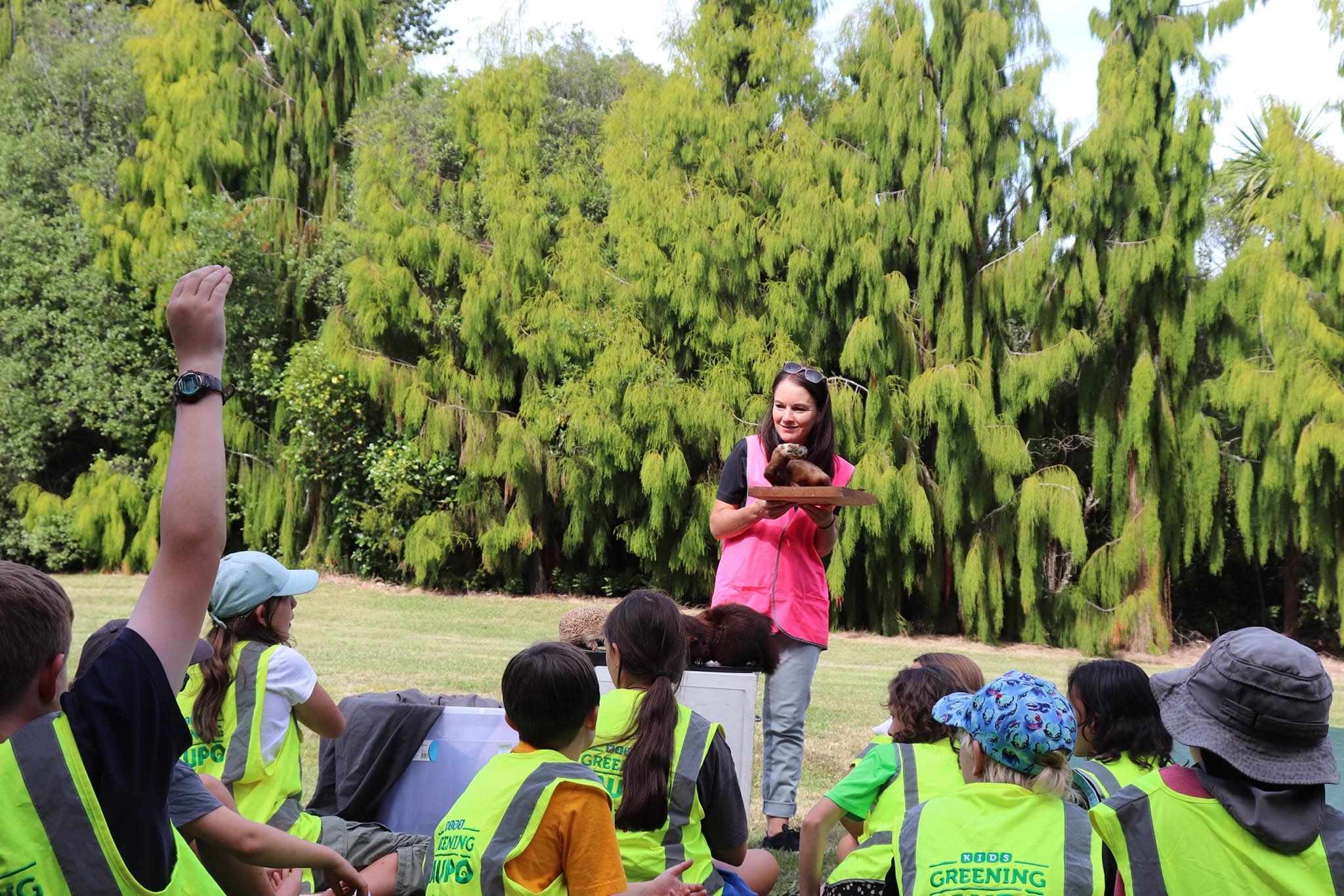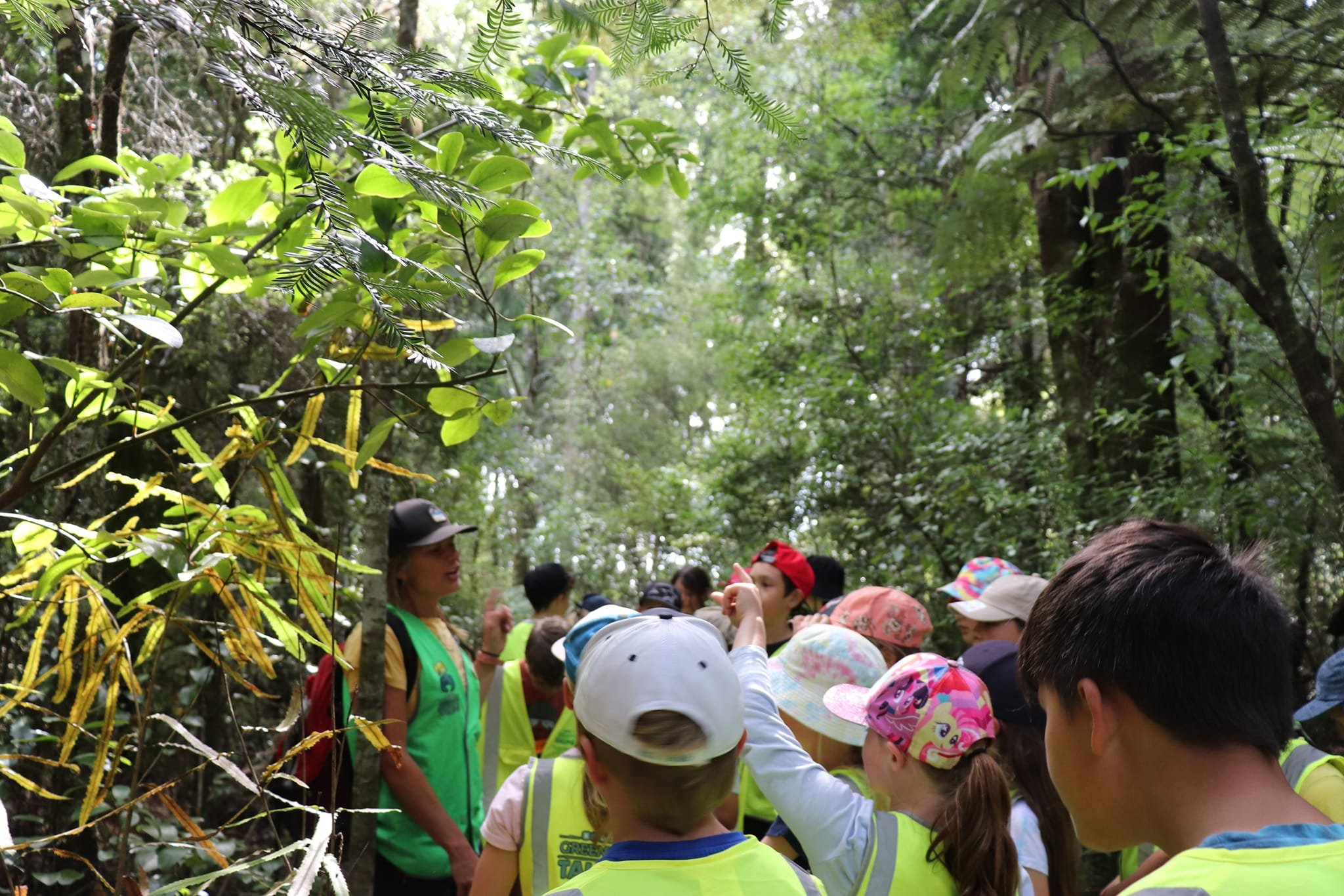Student Leadership Whanau Day
We have over 100 student leaders on our teams this year. These students all come from different schools and join us outside of school time to learn about conservation, support native restoration work and take on leadership roles. We got them all together for a Saturday session at the Waipahihi Botanical Reserve .
After all teams had done activities, their families joined us for a picnic. It was a big event, but a lovely way to kick off our year with them. Thanks so much to all of the amazing parents who helped prepare the kai or support sessions at this event. We couldn't have done it without you. The article below is written by one of our student leaders, Jamie Ross from Mountview School.
Student Leadership Team Fun Day and Whanau Picnic
By Jamie Ross
The Kids Greening Taupō student leadership team came together for some fun sessions to learn more about Aotearoa New Zealand biodiversity and native species. We where split up into three groups, the year 3’s and 4’s, 5’s and 6’s, and 7’s and 8’s. We had three quarters of an hour at each learning station.
One of the stations had Hellene Ross who is a local raranga artist, along with her two helpers, Andrea and Naomi. She and her helpers taught the team how to weave Putiputi flowers, using Harakeke (flax) by folding and fixing the harakeke into flower like shapes. She also taught us how to cut harakeke. You can’t cut the parents and the children of the plant (inside leaves). You can only cut the grandparents, great grandparents (outside leaves), and so on. This is because the parents and children are still too small to be cut. She also taught us how to cut harakeke, you must cut them on an angle facing downwards. We also discussed Tikanga and not harvesting the harakeke in the rain so that we don’t hurt ourselves.
The next activity was with Rachel Thompson who is one of the people who runs Kids Greening Taupō. She taught the kids about the animal life in New Zealand, she taught us about the predators and who was their prey. Then we played a game called The Birds of Aotearoa. There was a tarp and a fair amount of hula hoops. We were picked to either be predator or prey. The predators were positioned on the tarp and the prey were placed in the hula hoops (the native forest), each prey had one hoop each. The rules of the game where that each prey had to move to another hoop each round. They could not be in the same one that they were in before. The predators had to try and tag the prey whilst they were out of their hoop. The hoop/forest is the safe zone. As they played, time went on in the game and the animals changed from ancient animals into different predators and prey that we have today. An example is that pouakai/Haast eagles that lived hundreds of years ago were the main predators, along with falcons/karearea and kerangi/hawks. Now, the main predators are introduced species such as stoats rats and other feral predators. There were some of these introduced in the game. Moa are now extinct, but we still have Pukeko, takahe and kiwi. There was also deforestation which destroyed the forests which were home to the prey animals, so hoops were removed. It was a great game for us to get to know about the animals in Aotearoa and their habitat changing over time.
The last activity was with Heidi Pritchard, who is another teacher who runs Kids Greening Taupō. She took the children to a shady spot to talk about why the kids joined Kids Greening Taupo. As she was about to take the kids for a walk one of us spotted a Kererū (New Zealand pigeon). We had a talk about it and moved on. We walked until we found an interesting plant called rimu, which we learnt about. We talked about how its name translates to seaweed as it looks like tiny seaweed. The sap from a Rimu tree can be used to stop bleeding. We had an explore around the area and we found lots of things such as feathers, bugs, leaves, and fungus. One of the things that we discovered was the horopito plant that is native to NZ. If you chew its leaves for long enough it will start to taste very spicy. We saw some Kowaowao (hounds tongue fern), which you can eat like lettuce and it tastes like macadamia nuts. When the timer was almost out, we headed back. When we got back to base we had some free time with all of the other groups; playing with games such as disk golf, catch the rat, corn hole and some others. As time went on we got to have burgers and other kai which was delicious. We can’t wait for more sessions like this because it is so much fun. We would also like to thank Kids Greening Taupō leaders for all of their hard work in preparing sessions like this for us.
